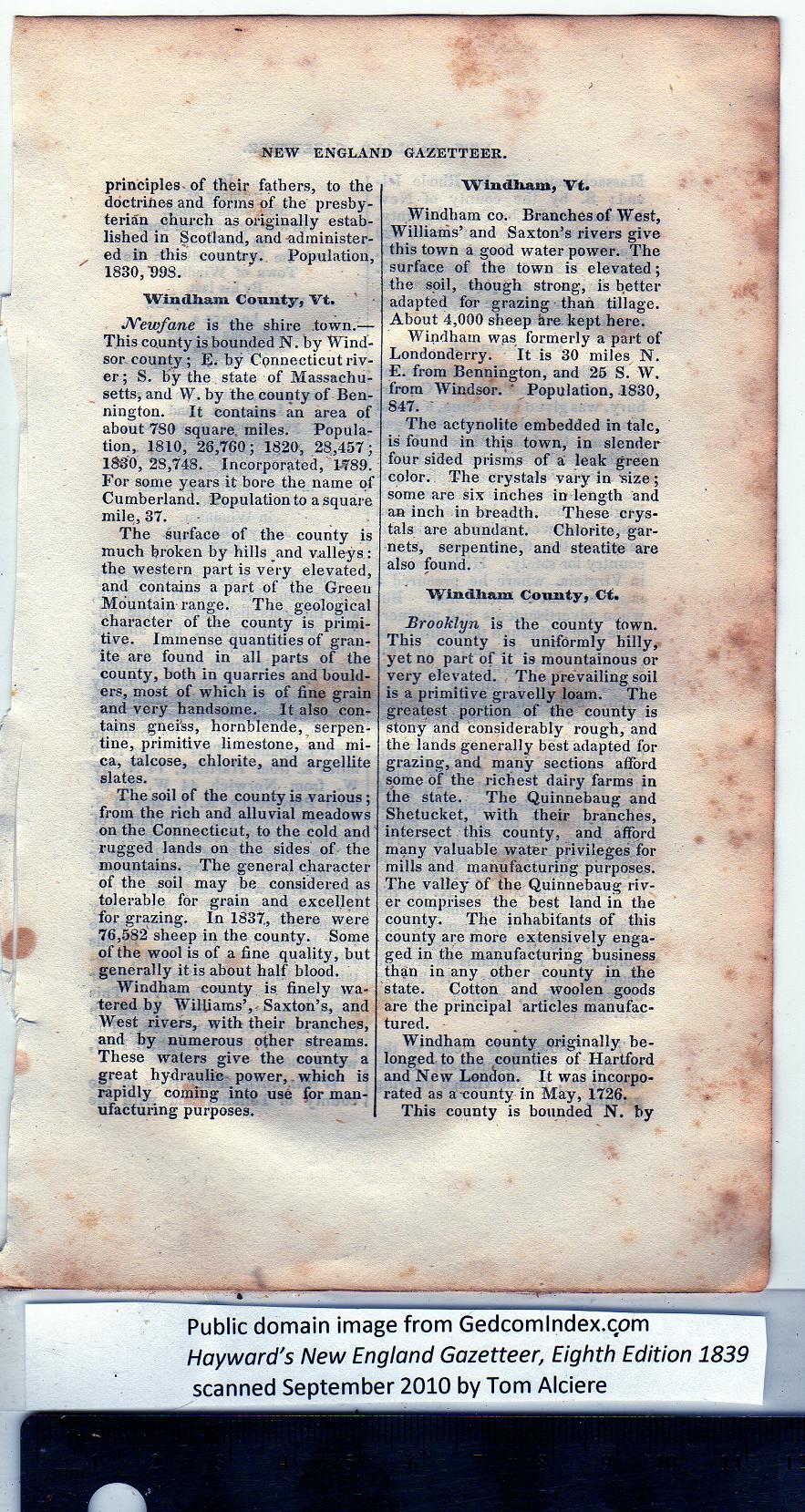|
principles- of their fathers, to the
doctrines and forms of the presby-
terian church as originally estab-
lished in Scotland, and-administer-
ed in this country. Population,
1830, DOS.
Windham County, Vt.
Newfane is the shire town.—
This co.unty is bounded N. by Wind-
sor county; E. by Connecticut riv-
er ; S. by the state of Massachu-
setts, and W. by the county of Ben-
nington. It contains an area of
about 7S0 square, miles. Popula-
tion, 1810, 28,760; 1820, 28,457;
1830, 28,748. Incorporated, 1-789.
For some years it bore the name of
Cumberland. Population to a square
mile, 37.
The surface of the county is
much broken by hills and valleys:
the western part is very elevated,
and contains a part of the Greeu
Mountain range. The. geological
character of the county is primi-
tive. Immense quantities of gran-
ite are found in all parts of the
county, both in quarries and bould-
ers, most of which is of fine grain
and very handsome. It also con-
tains gnei'ss, hornblende, serpen-
tine, primitive limestone, and mi-
ca, talcose, chlorite, and argellite
slates.
The soil of the county is various;
from the rich and alluvial meadows
on the Connecticut, to the cold and
rugged lands on the sides of the
mountains. The general character
of the soil may be considered as
tolerable for grain and excellent
for grazing. In 1837., there were
76,582 sheep in the county. Some
of the wool is of a fine quality, but
generally it is about half blood.
Windham county is finely wa-
tered by Williams’, Saxton’s, and
West rivers, with their branches,
and by numerous other streams.
These waters give the county a
great hydraulic power, which is
rapidly coming into use for man-
ufacturing purposes.
|
Windham, Vt.
Windham co. Branches of West,
Williams’ and Saxton’s rivers give
this town a good water power. The
surface of the town is elevated;
the soil, though strong, is better
adapted for grazing than tillage.
About 4,000 sheep hre kept here.
Windham was formerly a part of
Londonderry. It is 30 miles N.
E. from Bennington, and 25 S. W.
from Windsor. * Population, 1830,
847.
The actynolite embedded in talc,
is found in this town, in slender
four sided prisms of a leak green
color. The crystals vary in 'size;
some are six inches in length and
an inch in breadth. These crys-
tals are abundant. Chlorite, gar-
nets, serpentine, and steatite are
also found.
Windham County, Ct.
Brooklyn is the county town.
This county is uniformly hilly,
yet no part of it is mountainous or
very elevated. The prevailing soil
is a primitive gravelly loam. The
greatest portion of the county is
stony and considerably rough, and
the lands generally best adapted for
grazing, and many sections afford
some of the richest dairy farms in
the state. The Quinnebaug and
Shetucket, with their branches,
intersect tbis county, and afford
many valuable water privileges for
mills and manufacturing purposes.
The valley of the Quinnebaug riv-
er comprises the best land in the
county. The inhabitants of this
county are more extensively enga-
ged in the manufacturing business
than in any other county in the
state. Cotton and woolen goods
are the principal articles manufac-
tured.
Windham county originally be-
longed to the counties of Hartford
and New London. It was incorpo-
rated as a'county in May, 1726.
This county is bounded N. by |
